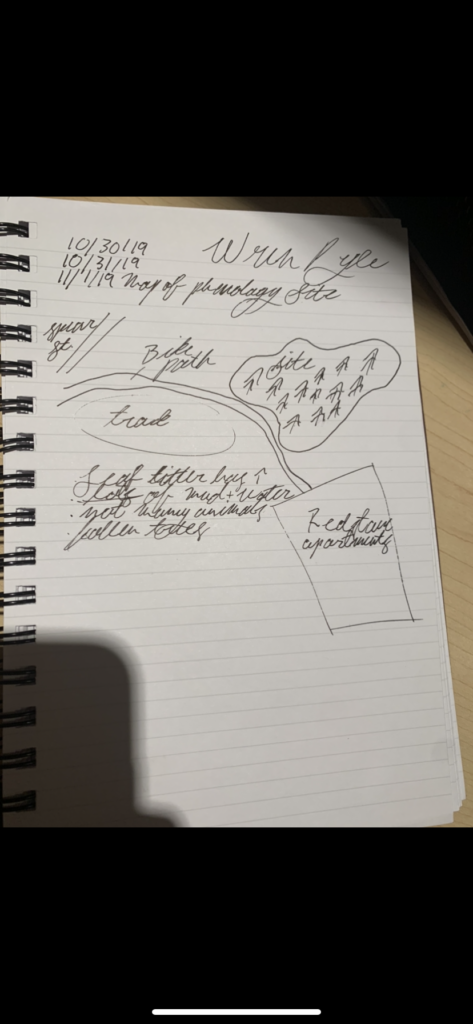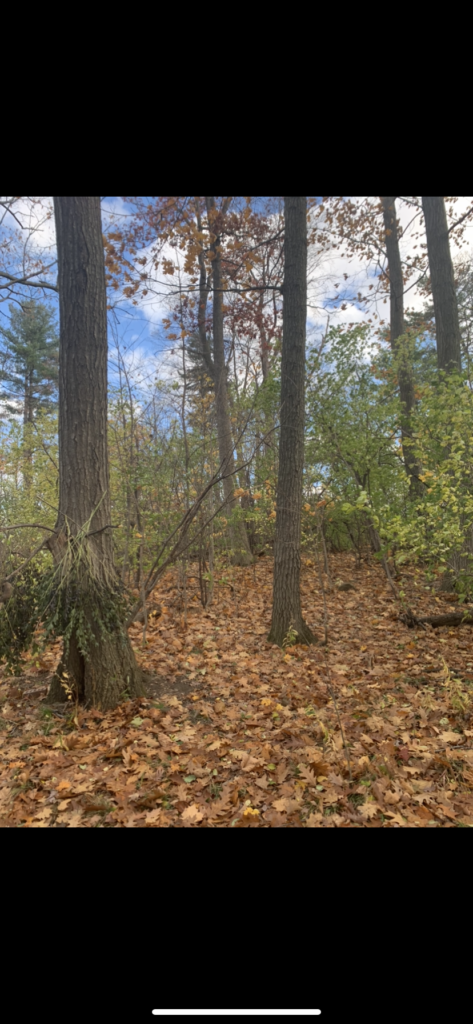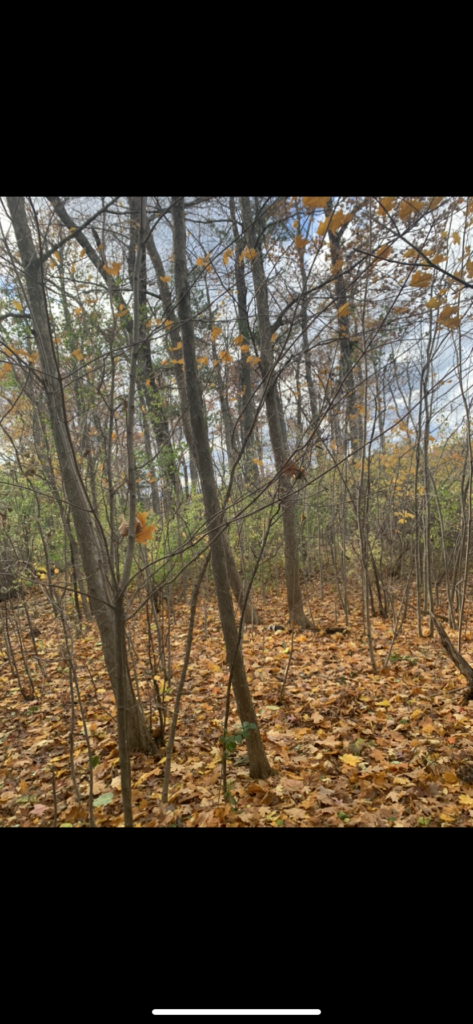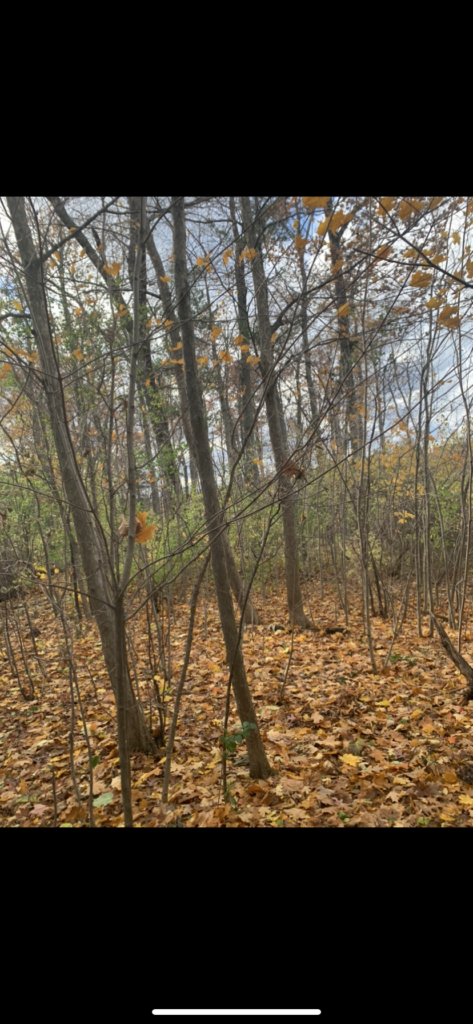Over the past week, I have journeyed to my spot a number of times and observed quite a few species. Some of them include Vulpes vulpes, Acer saccharinum, Betula papyrifera, Acer platanoides, Acer saccharum, and Tamias striatus.
- In my small spot, there are a plethora of species that inhabit this oasis of forest on the outskirts of the UVM Campus. Unfortunately, the foxes and chipmunks I was not able to photograph, as I was returning from practice and only saw quick flashes of them in the woods. But, there is clearly a community of animals that call this area home. The other species that mainly populated this site were trees that are common to wild areas in Vermont. The reason that these trees were characteristic of this site was that this site is a microcosm for Vermont wildlife in an urban environment. Maple trees and Birches are quite common in wild Vermont but with much of Burlington being urbanized and many spaces in the surrounding area having been cleared for agriculture; these species are a reminder of what Vermont truly is.
- Throughout the past weeks, the vegetation has begun preparing for the winter with most of the trees shedding their leaves and going dormant for the cold months ahead. Overall, not much has changed but I look forward to observing this space as it begins to grow again in the spring.
- Due to the heavy rains over Halloween, the ravens in my site became much deeper and spaces that had been bone dry before had transformed in major creeks. This site sits at the basin of the Redstone apartments and is in the direct line of any runoff that would come from that area. As more precipitation comes throughout the remainder of the fall I expect my site to only become increasingly saturated.
- Drawing a map of my place and thinking about the geographic location of my place made me think more about how the location of this space has shaped the topography of the land. Due to the number of paved surfaces that site above my site, it makes sense that the place would have high rates of water as it is the first non-permeable surface for the majority of Redstone campus and is at a much lower elevation than the majority of the campus.





